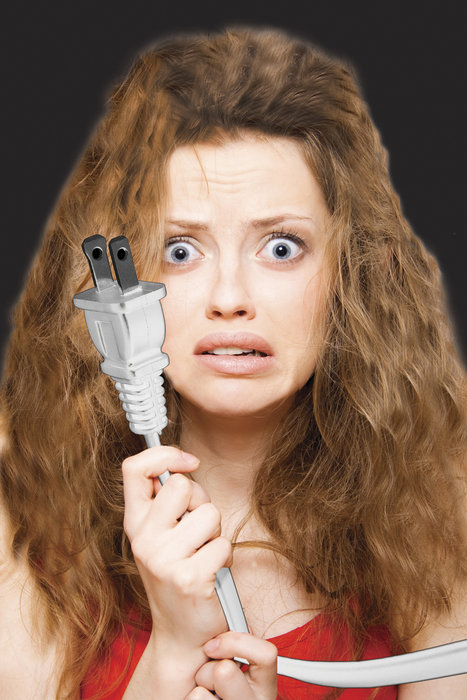In the beginning there was patience.
Thousands of Hudson County residents who lost power in the first 24 hours of Superstorm Sandy knew they probably wouldn’t get through this major weather event unscathed, and many had stocked up on items like crackers and canned tuna knowing they might have to brave a day or two without electricity.
So, as the lights flickered out across the county on Monday, Oct. 29 and Tuesday, Oct. 30, no one was surprised and probably few were angry.
As the days dragged on, however, “dinner by candlelight” became less romantic, and more a pain in the derriere.
And then a magical thing happened. The lights began to come back on – at least they did for some residents. Initially, a light in a neighbor’s window was a sign of hope that you, too, would soon be able to surf the Web, watch TV, and cook a hot meal.
But for the people who were still without power six, seven, eight days after Sandy struck, these signs of hope eventually felt like acid in a wound.
Some switches had to be cleaned with a metal toothbrush.
____________
For days, customers were told that PSE&G planned to have electricity restored to all of its customers by Friday, Nov. 9, with the overwhelming majority of “customers…restored before then.”
Still, residents were warned, “There may still be isolated pockets of customers who have individual flooding or downed line issues that may take slightly longer.”
On Thursday, Nov. 8, the utility company said that about 70,000 customers who lost power due to the hurricane were still without service. Nor’easter Athena, which hit on Wednesday, Nov. 7, added to the misery. The nor’easter left 90,000 customers without power, 45,500 of whom were still in the dark as of last Thursday. (Among the people who lost power due to the nor’easter were several who had only recently had their service restored.)
“People were frustrated and got frustrated with us, because they think we have more information than they do. But we didn’t,” said Greg Kierce, director of the Office of Emergency Management in Jersey City, a town that experienced widespread outages. “PSE&G actually didn’t give us any more specific information either. So people got mad at us because we couldn’t tell them when the power would come back in their neighborhood. I think PSE&G was just totally overwhelmed by this situation.”
Power lines that were knocked down by a tree on Kennedy Boulevard were still down and had not been repaired as of Thursday, Nov. 8, Kierce said.
The power divide
Why did some areas in Hudson County have power all through the storm, while others had it restored quickly and still others waited over a week for the lights to come back on?
“Storm surges impacted switching stations and substations – four switching stations alone in Hudson County,” said PSE&G spokeswoman Bonnie Sheppard. “When you open up the cabinets, there are small relays and small switches that are about an inch tall. They all have to be opened up and dried out [by hand] with cloth rags. And then they were taking a metal toothbrush and cleaning the corrosion off of them.”
After that tedious process is done, electricians have to test the relays and switches to see if they work before the switching station can be re-energized. Sometimes in the process a “transformer blows,” Sheppard said, and further repairs are needed.
It took approximately 100 electricians to repair one switching station alone, Sheppard said. She personally visited this switching station and said it took the electricians about two and a half days to get it working again.
It matters where your service comes from
Each switching station services several thousands of customers across different municipalities. For instance, thousands of Jersey City and Bayonne customers were connected to one station, while residents of Hoboken are plugged into another station that also serves parts of Jersey City.
Sheppard said this is one possible reason why people in one condo may be in the dark while their neighbors across the street have light — because different addresses are connected to different switching stations and substations.
Downed wires are another reason that neighbors may be on opposite sides of the power divide. PSE&G spokesperson Richard Dwyer said disconnected wires may prevent power from reaching pockets of a community that are connected to the same switching or substations as their neighbors.
Neighborly charging
Phil Cohen lives in a small part of uptown Hoboken that maintained power through the whole ordeal. He and his neighbors on 11th Street between Bloomfield Street and Park Avenue threaded extension cords through their windows and mail slots and allowed neighbors to recharge their phones and use their WiFi. Another neighbor allowed people to watch the news on her flat screen TV while they charged up.
“Someone even baked cookies,” Cohen said. “I heard that the…substations that power Hoboken were all buried under three feet of water,” he said, adding he also heard his area maintained power because it is connected to a substation in West New York.
Sheppard was unable to be reached at press time to confirm whether Hoboken shares a substation with West New York.
Few public officials in Hudson County have publicly criticized PSE&G. Across the Hudson River, New York Gov. Andrew Cuomo has called the power utilities in his state antiquated and unable to manage the needs of the modern power grid.
But some residents in Hudson County have charged that certain affluent areas received power before more working class communities.
Sheppard said the reconnection priority is always to re-energize hospitals, fire stations, police stations, and other emergency agencies first. After those priorities are met, the utility company works closely with local municipalities to determine which areas should be re-energized next, with an eye towards areas with the largest numbers of customers.
E-mail E. Assata Wright at awright@hudsonreporter.com.
